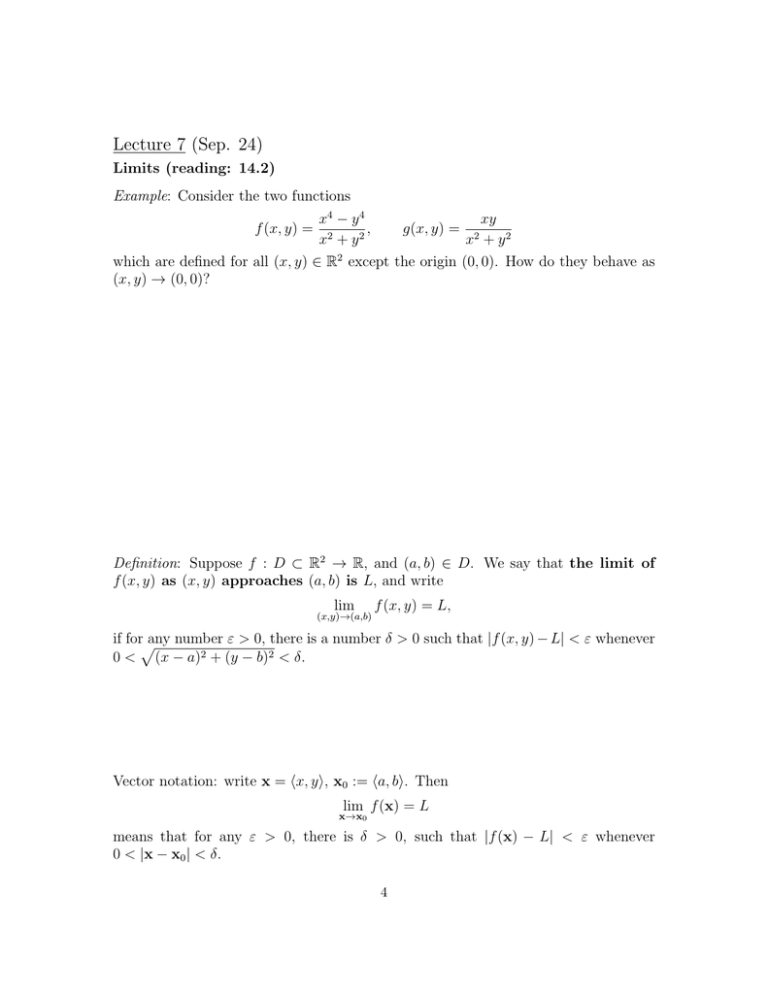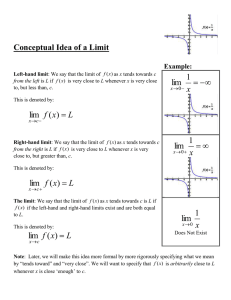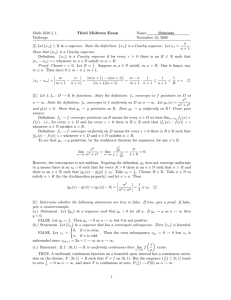Lecture 7 (Sep. 24)
advertisement

Lecture 7 (Sep. 24) Limits (reading: 14.2) Example: Consider the two functions f (x, y) = x4 y 4 , x2 + y 2 g(x, y) = x2 xy + y2 which are defined for all (x, y) 2 R2 except the origin (0, 0). How do they behave as (x, y) ! (0, 0)? Definition: Suppose f : D ⇢ R2 ! R, and (a, b) 2 D. We say that the limit of f (x, y) as (x, y) approaches (a, b) is L, and write lim (x,y)!(a,b) f (x, y) = L, if forpany number " > 0, there is a number 0 < (x a)2 + (y b)2 < . > 0 such that |f (x, y) L| < " whenever Vector notation: write x = hx, yi, x0 := ha, bi. Then lim f (x) = L x!x0 means that for any " > 0, there is 0 < |x x0 | < . > 0, such that |f (x) 4 L| < " whenever Example: Find the limit, or show that it does not exist: 1) lim(x,y)!(0,0) xy+1 x2 +y 2 +1 2) lim(x,y)!(0,0) x2 y x2 +y 2 3) lim(x,y)!(0,0) xy 2 x2 +y 4 5








